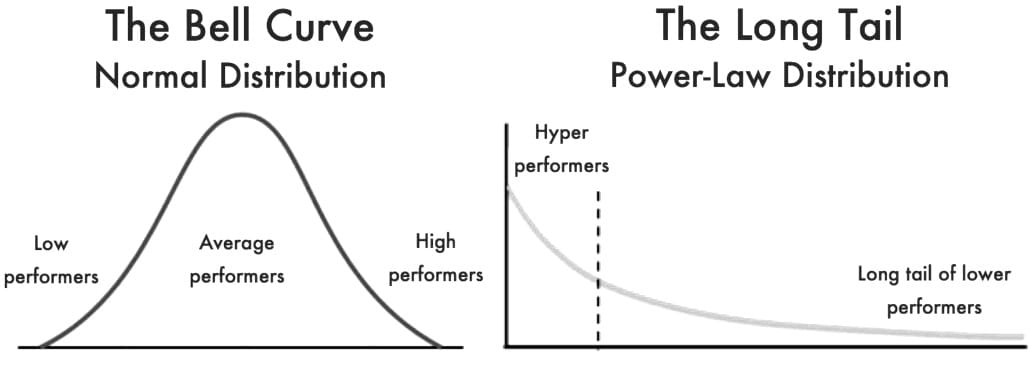Google Superstars

Why Google pays its superstar employees "unfairly" by silently using the power-law rule? Since "equal" does not necessarily equate to "fair," especially when aiming to enhance overall employee retention and performance.
Assume you have 100 employees, and I ask you to graph their performance. Most likely, your chart will resemble a bell curve, with a small percentage of strong performers on the left, a few underperformers on the right, and a large number of average performers in the middle.
Organizational researchers have shown, similar to the 80/20 rule, the majority of your company's output comes from a minority of "superstar" performers: What's known as a power-law distribution.
In performance terms, think of the power-law distribution as a long tail of steadily decreasing performance. Visually, it looks like this:

Pay Your Best People More
Most businesses have salary ranges. Each position is associated with a certain "worth," and even the most exceptional performers will eventually reach their peak. It makes sense; pay needs to be fair. However, fairness should not entail that superstars are paid only slightly more than regular workers.
In a misguided effort to be "fair," many organizations underpay their best employees, producing the very unfairness they are trying to avoid. And, more importantly, creating top talent turnover.
Fair compensation for employees should be your primary objective, rather than solely basing it on their contributions, productivity, and achievements. The benchmark for fairness shouldn't simply be "this is the maximum the job pays."
The foundation of "fair" should be "this is what you're worth."
Pay them as if you truly need to retain them, not just because you want to. Because, in fact, you do need them. Not only do they deliver results, but also scrutinizing their abilities, traits, and qualities can enhance the performance of other staff members.



